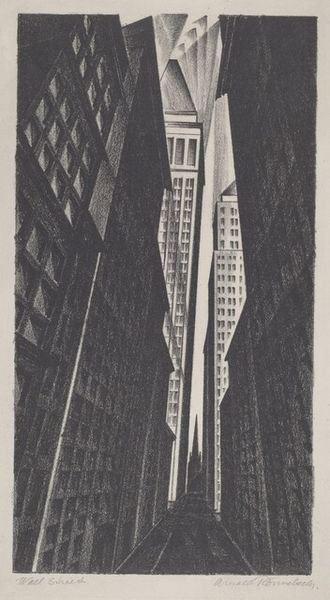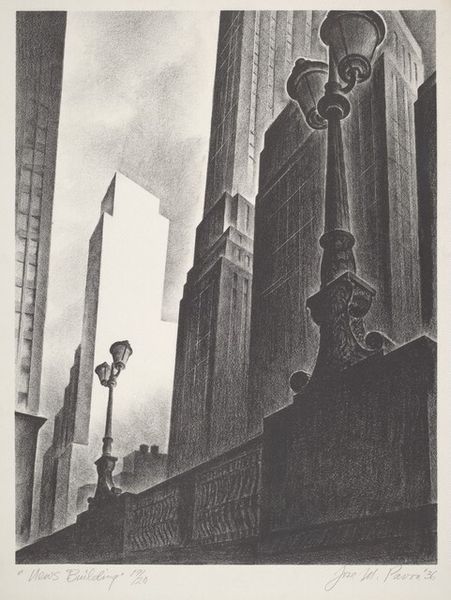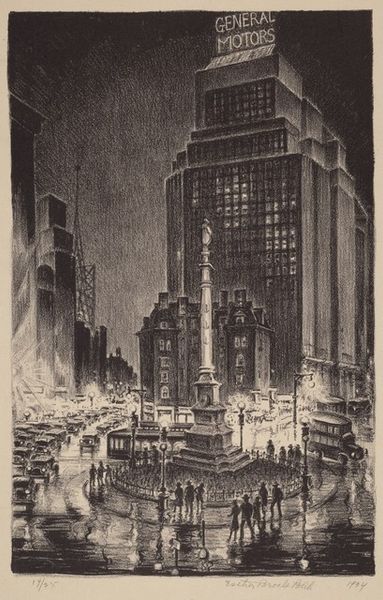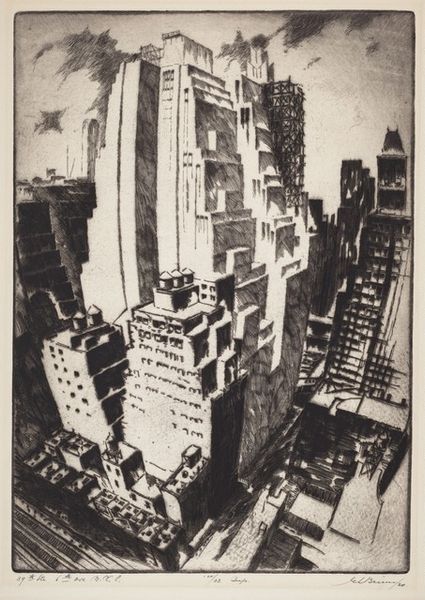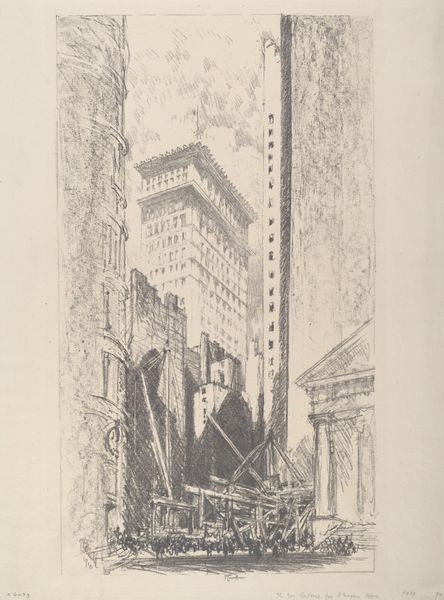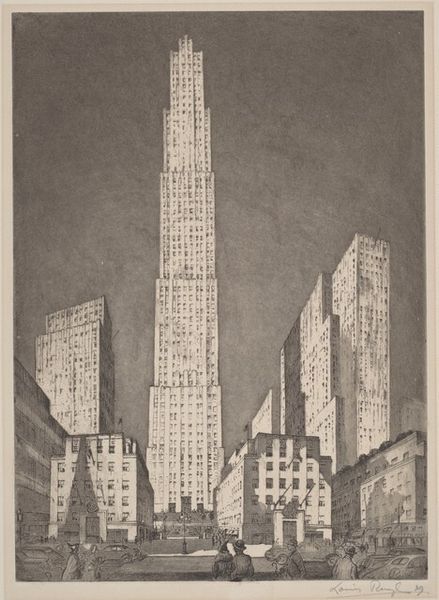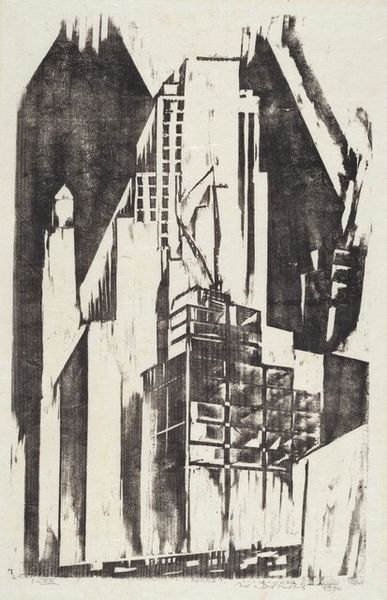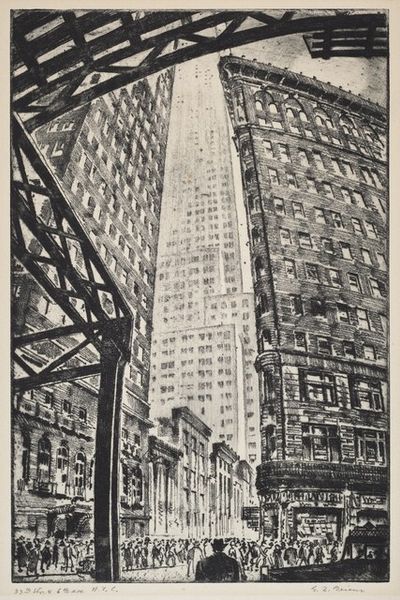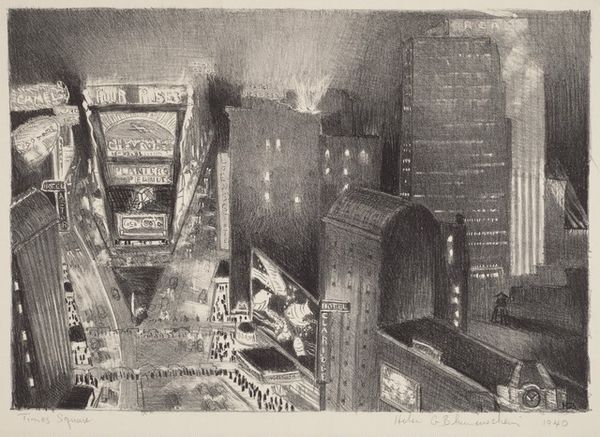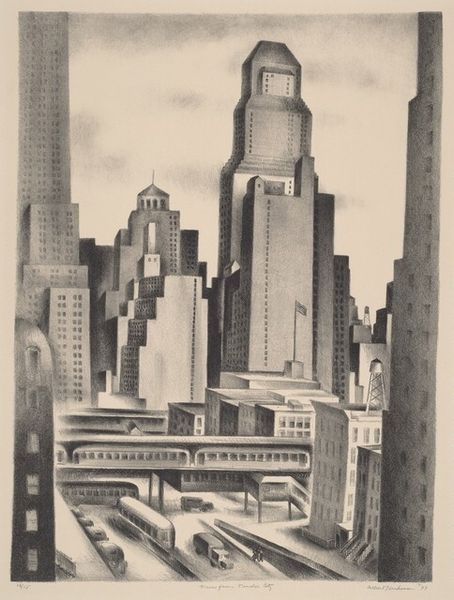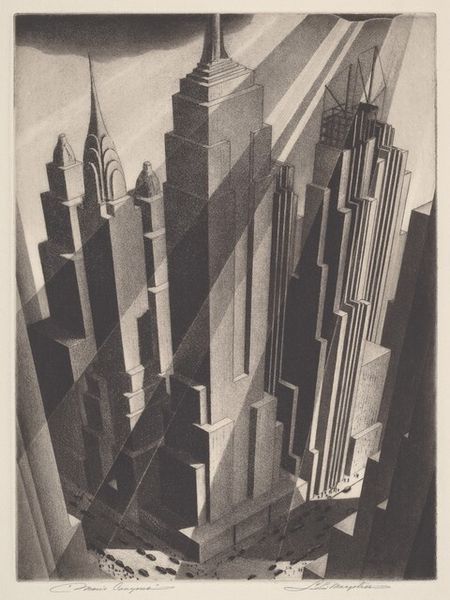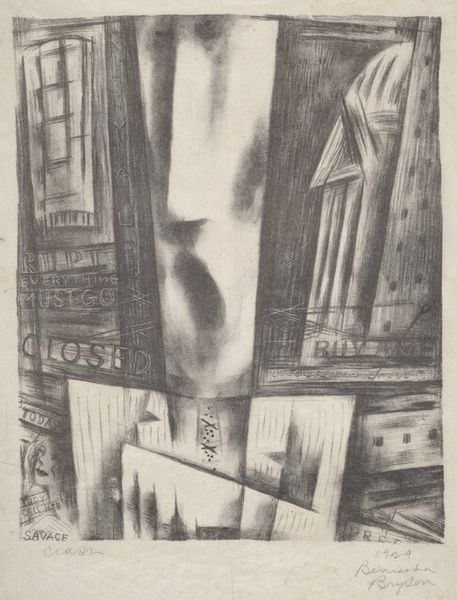
drawing, print, graphite
#
drawing
# print
#
pencil sketch
#
charcoal drawing
#
charcoal art
#
pencil drawing
#
graphite
#
cityscape
#
graphite
#
modernism
#
realism
Dimensions: image: 322 x 238 mm sheet: 403 x 291 mm
Copyright: National Gallery of Art: CC0 1.0
Curator: This drawing, titled "Untitled (Manhattan Scene)," was created in 1934 by Robert J. Freiman, using graphite. Editor: There's a dynamic tension between the weighty buildings and the comparatively fragile rendering of the crowd—an ominous energy, if I’m being honest. Curator: Considering the time period, it's worth remembering this piece comes from the Great Depression, capturing both the allure and alienating effect of rapid urban development. The sheer scale of the skyscrapers speaks to capitalist ambition, but at what cost to the individuals below? Editor: Scale is the word, isn't it? Look how Freiman uses these vertiginous lines to almost force the viewer's eye upwards. The skyscrapers dominate. Notice how he utilizes light, those dramatic shafts piercing through, accentuating the geometric forms. There is an interplay of darkness and light across surfaces; it feels almost sculptural, but with these really delicate gradations made possible through graphite. Curator: Precisely. And observe the positioning of the figures in relation to those powerful structures. Are they spectators, awestruck or perhaps marginalized? We could think of these beams of light, often associated with modernity and progress, as also signaling a loss of privacy, almost surveillance. How do we locate ourselves as individuals in this rapidly changing landscape? Editor: An interesting point. Visually, though, that contrast is compelling. The tight, controlled hatching that defines the architecture, against the more loosely suggested crowd, creates a sense of depth and airiness. Freiman clearly understands how to orchestrate visual interest across the composition. Curator: Absolutely. And the choice of graphite as a medium becomes relevant too. A print allows for wider circulation, therefore, greater access to these critical visual dialogues about society at the time, which feels incredibly important for an artist so directly engaging with themes of economic and social inequality. Editor: So, beyond the representational aspects, what resonates is Freiman’s sophisticated handling of tonal range, texture and perspectival play. I’m drawn to how skillfully he uses those purely formal elements to convey mood. Curator: I concur. Hopefully we have given our listeners an added layer of context to contemplate. Editor: A closer look often does reveal so much.
Comments
No comments
Be the first to comment and join the conversation on the ultimate creative platform.

